Course images can be enlarged.

Map image can be enlarged

Walk through Dazai’s footsteps, where the literary legend drunk and devoted to his works
The writer Osamu Dazai moved to Shimorenjaku, Mitaka-mura, Kitatama-gun, Tokyo (present-day Shimorenjaku, Mitaka City, Tokyo) on September 1, 1939 (Showa 14). During the nine years until his suicide in June 1948, he published “The Setting Sun,” “Run, Melos!” “No Longer Human” and other works. This “Osamu Dazai Footsteps Course” is a guided tour to help visitors remember his Mitaka days. Although most of the existing places associated with Dazai have disappeared, we hope that visitors will transcend time and space to experience the Mitaka where Dazai lived, walked, wrote, and drank.
1 Dazai Osamu Exhibit Room – This small house in Mitaka

Part of Osamu Dazai’s home has been recreated. In addition to the “Permanent Exhibition Room,” “Special Exhibition Room,” and “Hands-on Exhibition Room,” there is a space where visitors can view Dazai’s calligraphy and paintings from the porch as if they were overlooking a wheat field.
10:00~18:00
☎ 0422-79-0033
Closed: Mondays (if Monday is a national holiday, the museum will be open on Monday and closed the following day and the day after), Year-end and New Year holidays *Temporary closure for exhibition changes
free
2 Rikubashi

It was built in 1929 (Showa 4). Osamu Dazai, who had a workroom nearby, liked this overpass and used to bring his editors and pupils here, saying, “There is a nice place. Photographer Shigeru Tamura is well known for his photographs of him in a cloak staring at the distant sky and descending the stairs.
3 The Former Nakabachi Family Residence Site
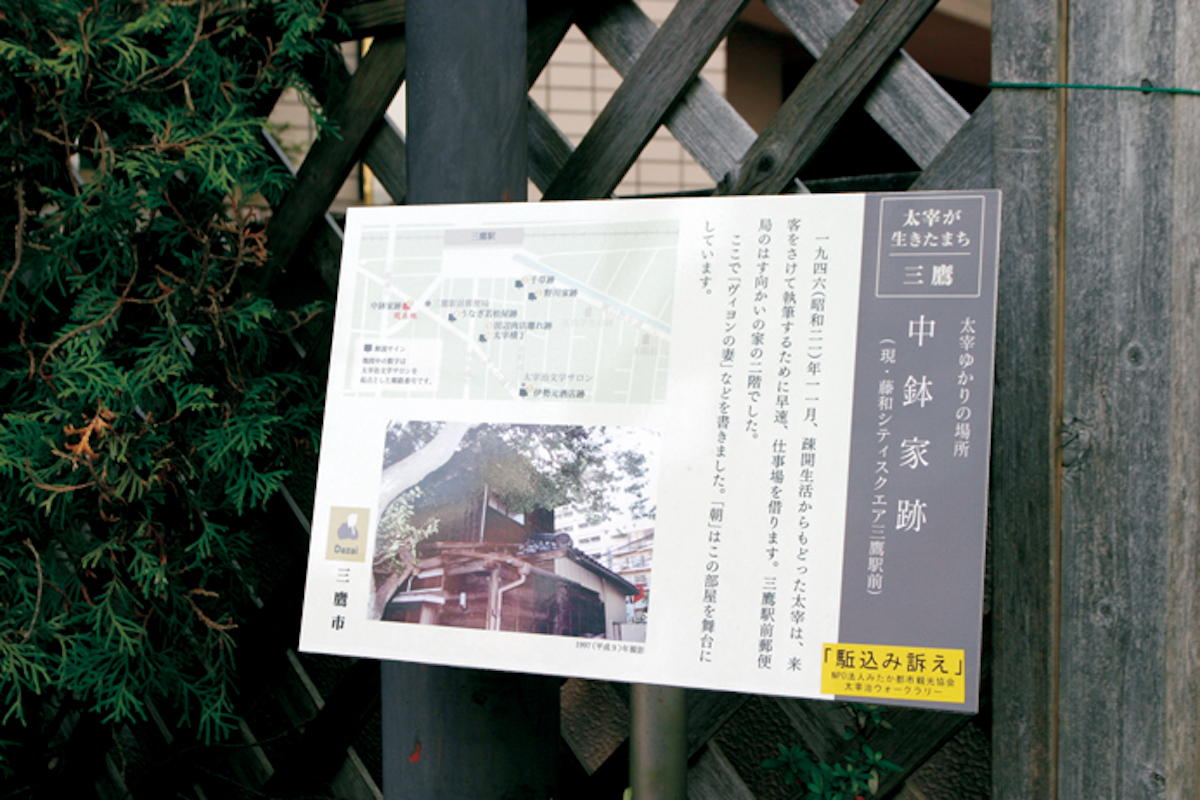
This was Osamu Dazai’s first workroom after returning to Mitaka from Kanagi-cho, where he had been evacuated, and it appears in his work “Morning”. He wrote “Merry Christmas” and “Villon’s Wife” here.
4 The Former Tanabe-Nikuten’s Annex Site
Osamu Dazai visited Shizuko Ota at Shimosoga Osanso in Kanagawa Prefecture, borrowed her diary, and drafted “The Setting Sun” at “Yasudaya Ryokan” in Mitsuhama, Izu. This was his second workroom, where he wrote the third and subsequent chapters. The mystery piece “The Criminal” is set at Tanabe Butcher Shop.
5 Dazai Osamu Literary Salon
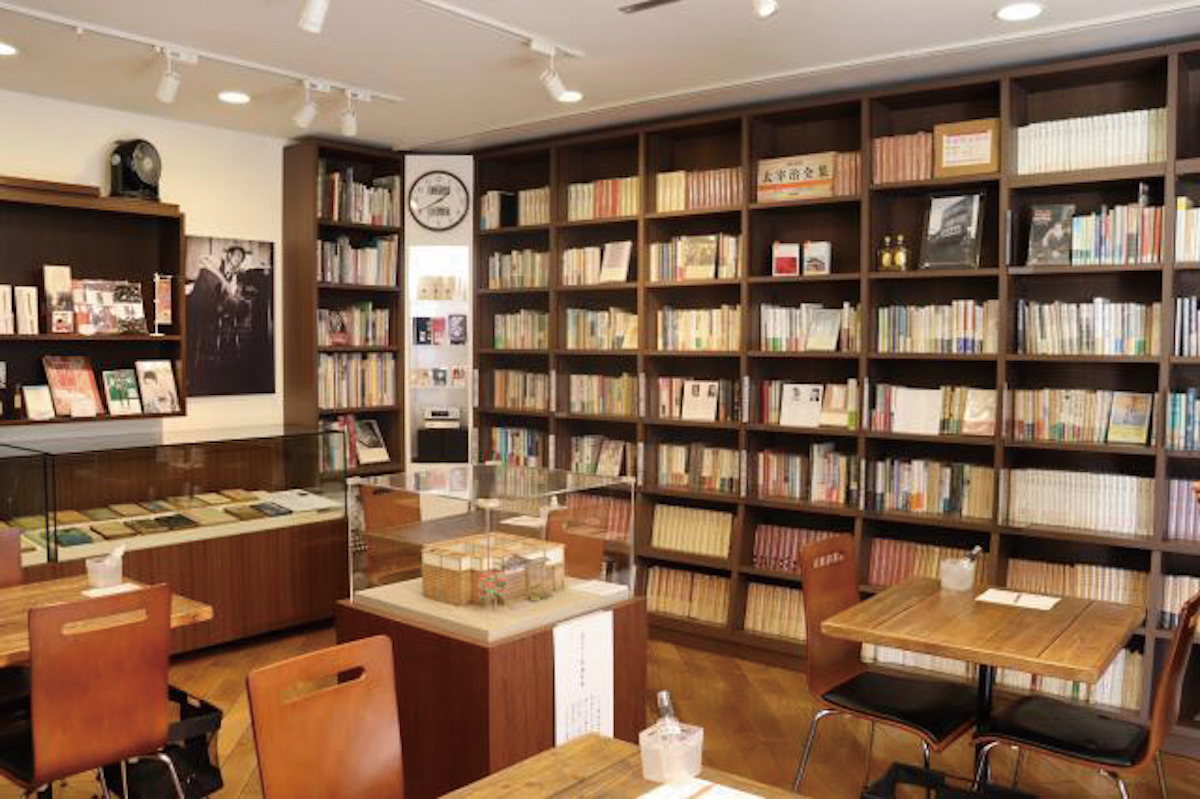
It serves as a base for “Mitaka, the town where Dazai lived,” a place for information exchange and dissemination, and a place for citizens to interact with each other. It was established in March 2008 on the site of the former Isegen Brewery, where Dazai once frequented, and was renovated in March 2022 with the addition of a book café function.
10:00~17:30
☎ 0422-26-9150
Closed: Mondays (if Monday is a national holiday, the museum will be open on Monday and closed the following day and the day after), Year-end and New Year holidays
free
6 The Former Nogawa Family Residence Site
The place where Tomiei Yamazaki, a hairdresser, lodged to work at a beauty salon in front of Mitaka Station. The place where Osamu Dazai made his last working room from the early fall of 1947 (Showa 22). the two left their wills, put away their belongings, and went to Tamagawa-josui late at night on June 13, 1948 (Showa 23)….
7 The Former Diner Site, Chigusa
The second floor was also used as a workroom. After Osamu Dazai went missing, it became the headquarters for the search for him, and after his body was found, it became the place for the autopsy. The owner, Konosuke Tsurumaki, took care of the Cherry Blossom Memorial Service.
8 Gyokkaseki
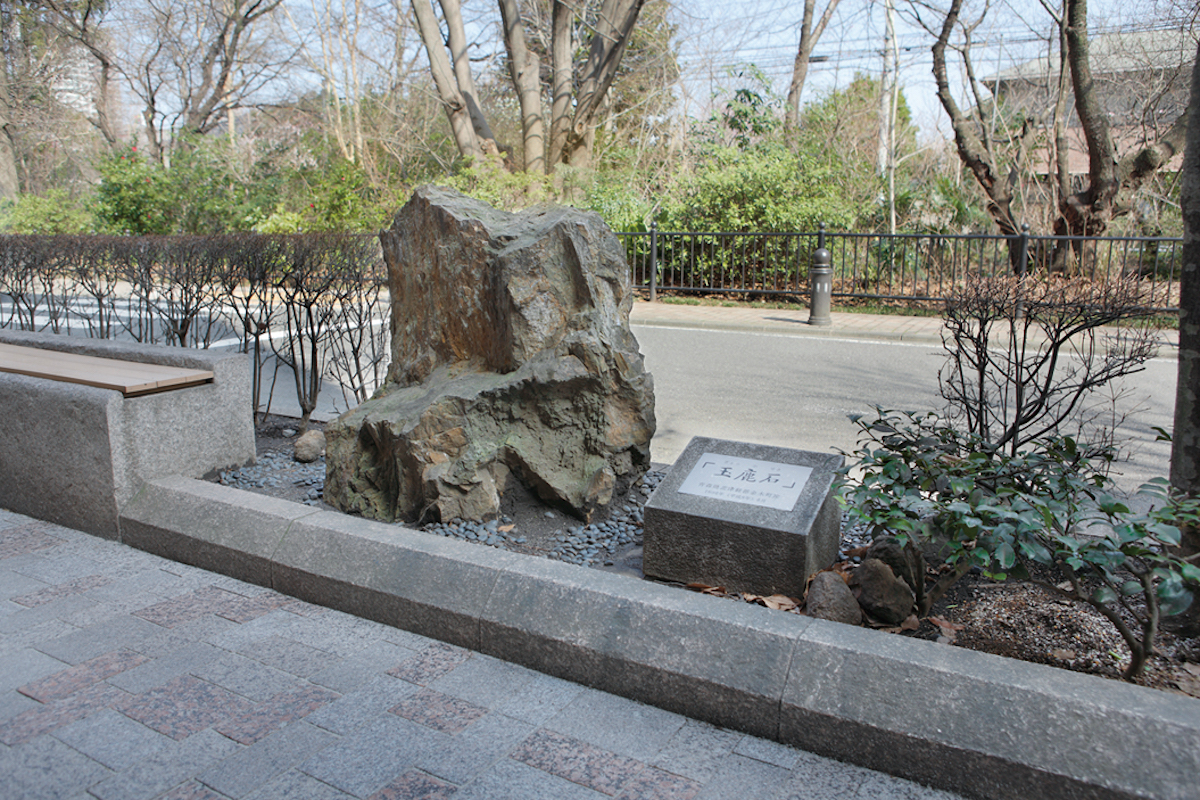
Installed near the place where Osamu Dazai and Tomiei Yamazaki entered the water. Osamu Dazai liked this place, which was like a waterfall, when he took a walk on the Tamagawa-josui. He often brought his editors and fellow writers to this place. A tamarika stone from his hometown, Kanagi-machi (now Goshogawara City), is placed here.
9 A crape myrtle
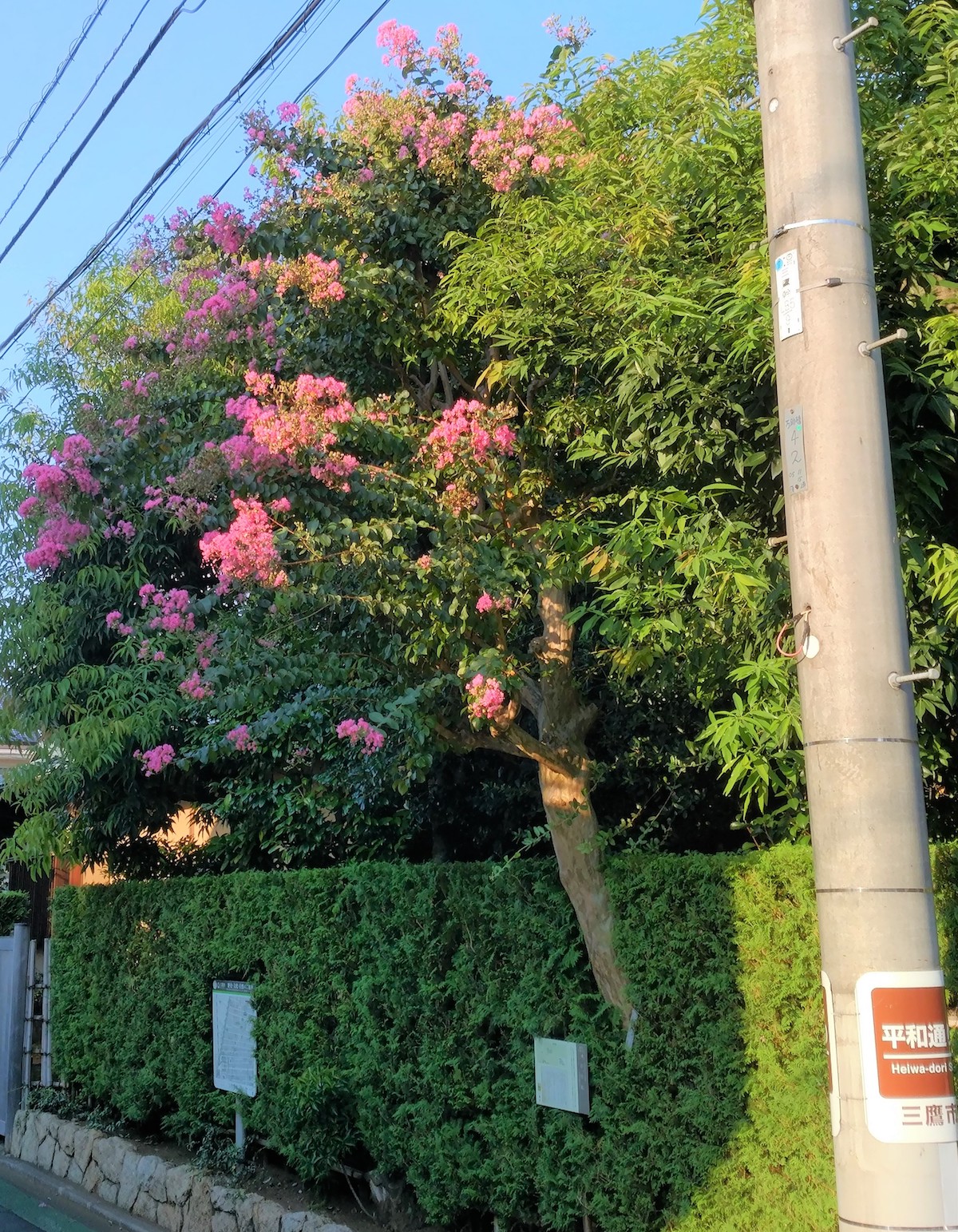
The crape myrtle tree (sarusuberi tree) that were planted by the gateposts of Osamu Dazai’s former residence have been transplanted here at Ishintei, a Japanese-style cultural facility in Mitaka City. This The crape myrtle tree (sarusuberi tree) appears in the work “Osan”.
10 Shinbashi Bridge Area
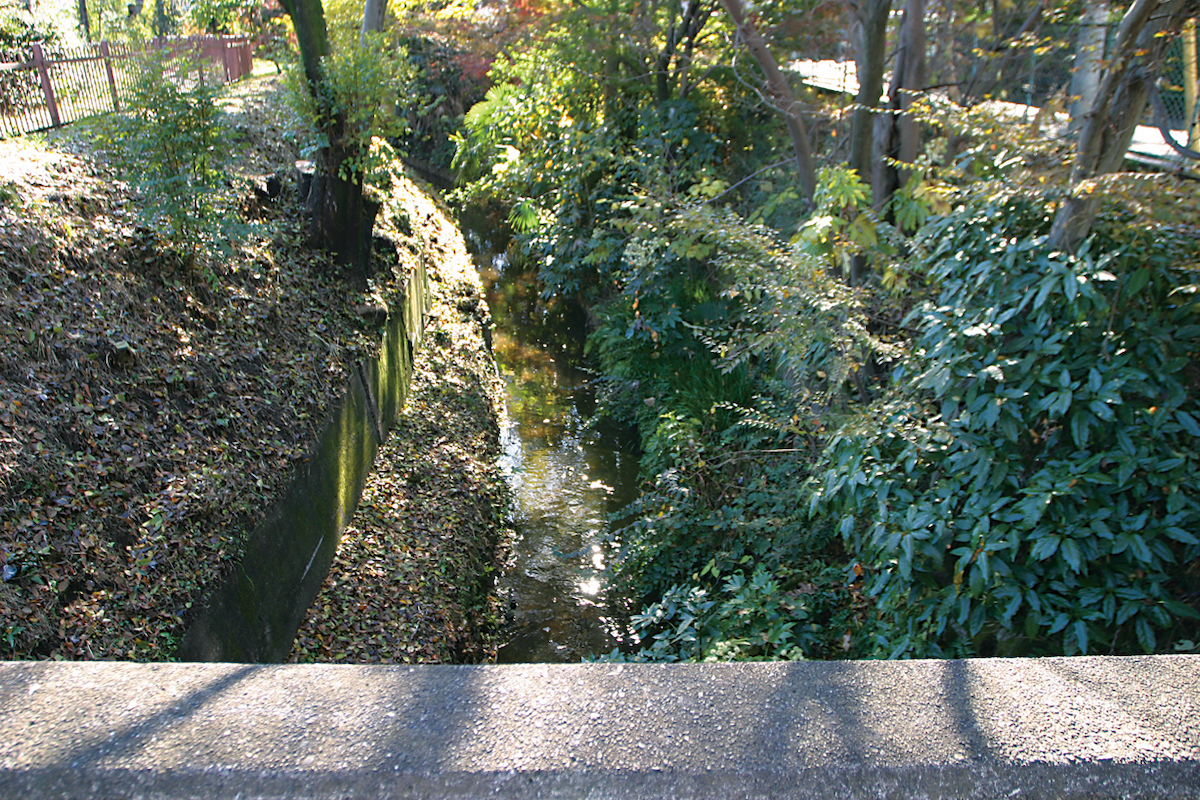
The Tamagawa Josui at that time was so swift and full of water that it was called “man-eating river,” and the search for Osamu Dazai and Tomie Yamazaki was conducted with water intake restricted at the Hamura intake on the Tama River. The two were found tied together by a cord near the new bridge over the water. Coincidentally, it was Dazai Osamu’s birthday on June 19.
11 Zenrinji
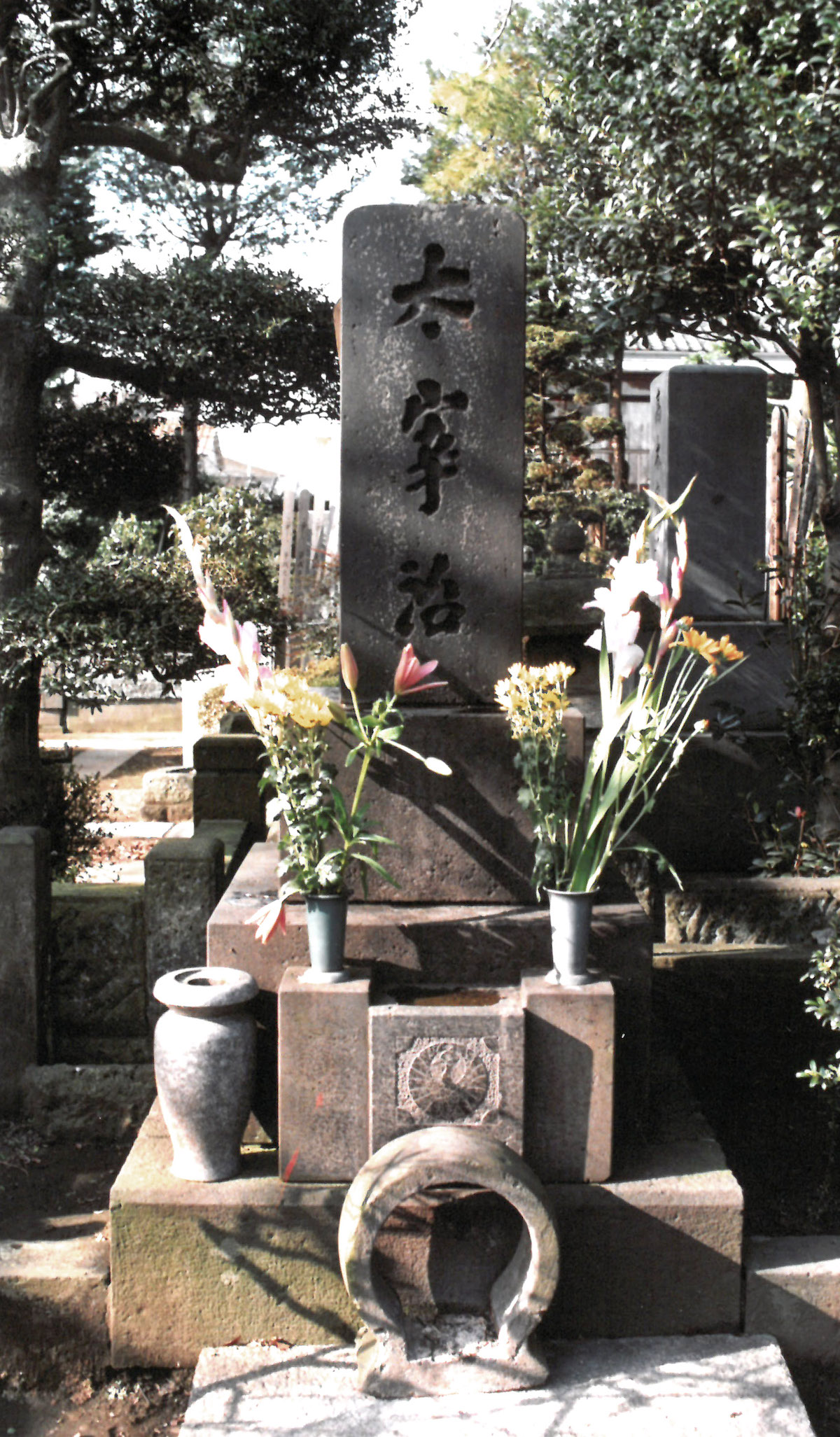
This Zen temple was built in 1700 (Genroku 13). In his work “Hanabukisetsu” (Flower Blossom Snow), Ogai Mori’s grave is described as follows: “In this temple, there is the grave of Ogai Mori. (omission) The cemetery is clean, and there are shadows of Ogai’s writings. If my filthy bones were buried in a corner of such a clean cemetery, there might be salvation after death…” This is the reason why he was laid to rest here. Mori Ogai’s (Rintaro) grave is located in front of Osamu Dazai’s grave.
- Area1 The Neighborhood of JR Mitaka Station
- Area2 Ghibli Museum, Mitaka and Mitaka City Yuzo Yamamoto Memorial Museum
- Area3 Historic Footsteps of the Japanese Author, Dazai
- Area4 Inokashira Onshi Park and Inokashira Nature Garden
- Area5 The Middle Eastern Cultural Center in Japan, and ICU Hachiro Yuasa Memorial Museum |Kondo Isami / Village of Osawa
- Area6 National Astronomical Observatory of Japan, Mitaka Campus, and Mitaka Picture Book House in the Astronomical Observatory Forest|Jindai Botanical Gardens, and Jindaiji
- Area7 Historic Site: Katsubuchi-Jinja
- Area8 Kanda River Headwaters|Tamagawa Aqueduct / Town Where Miki Rofu Resided
- TOP PAGE